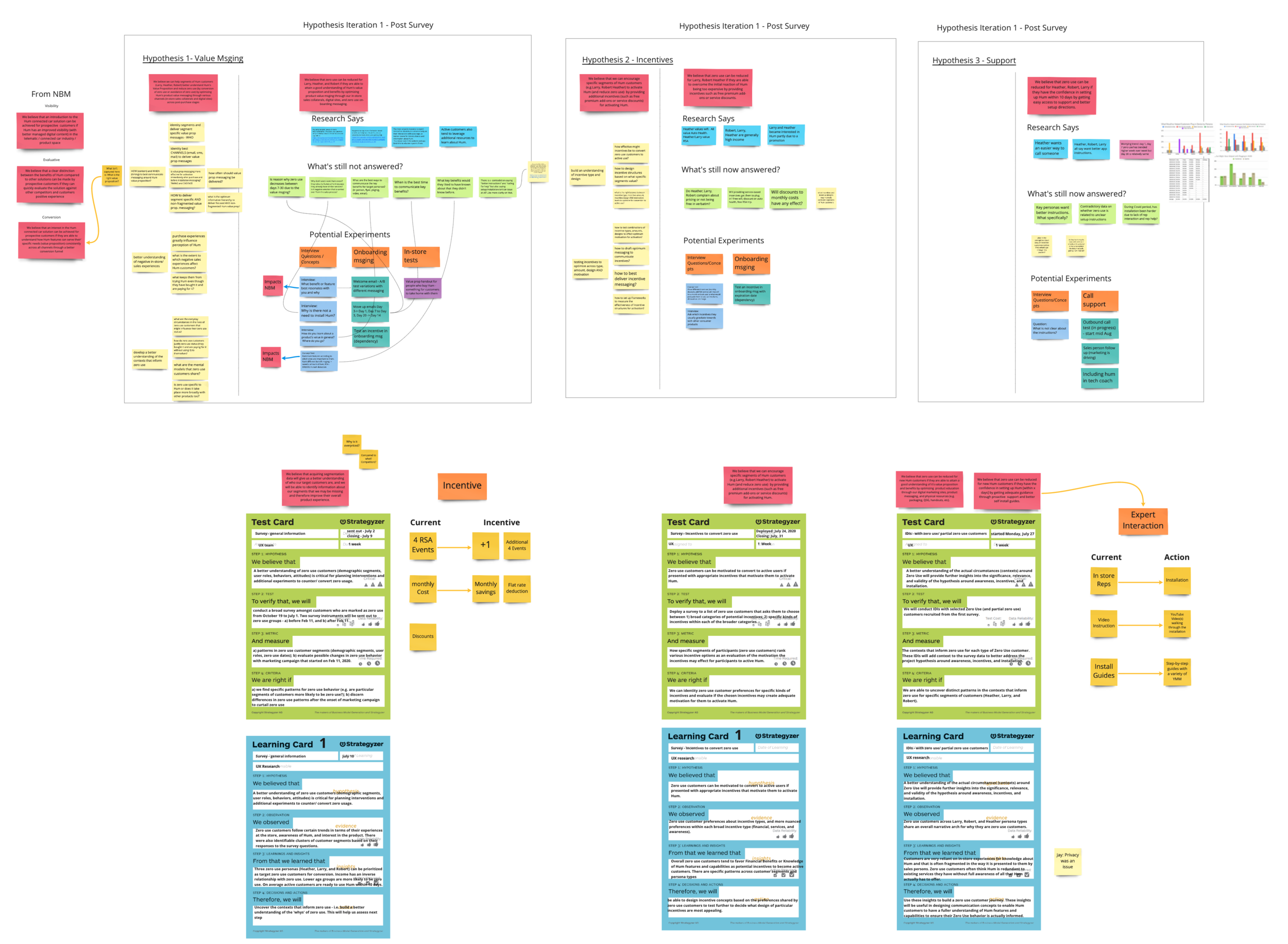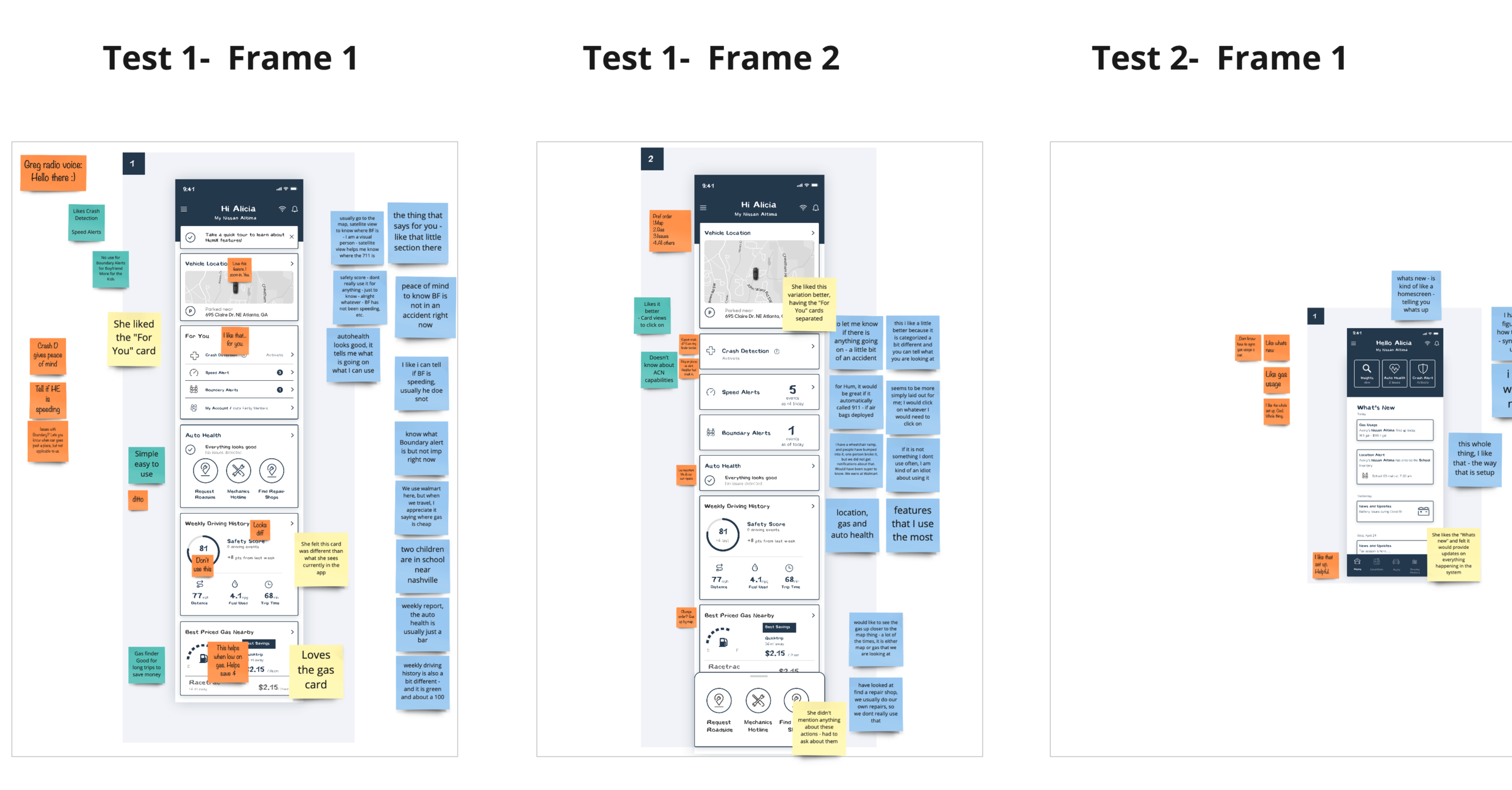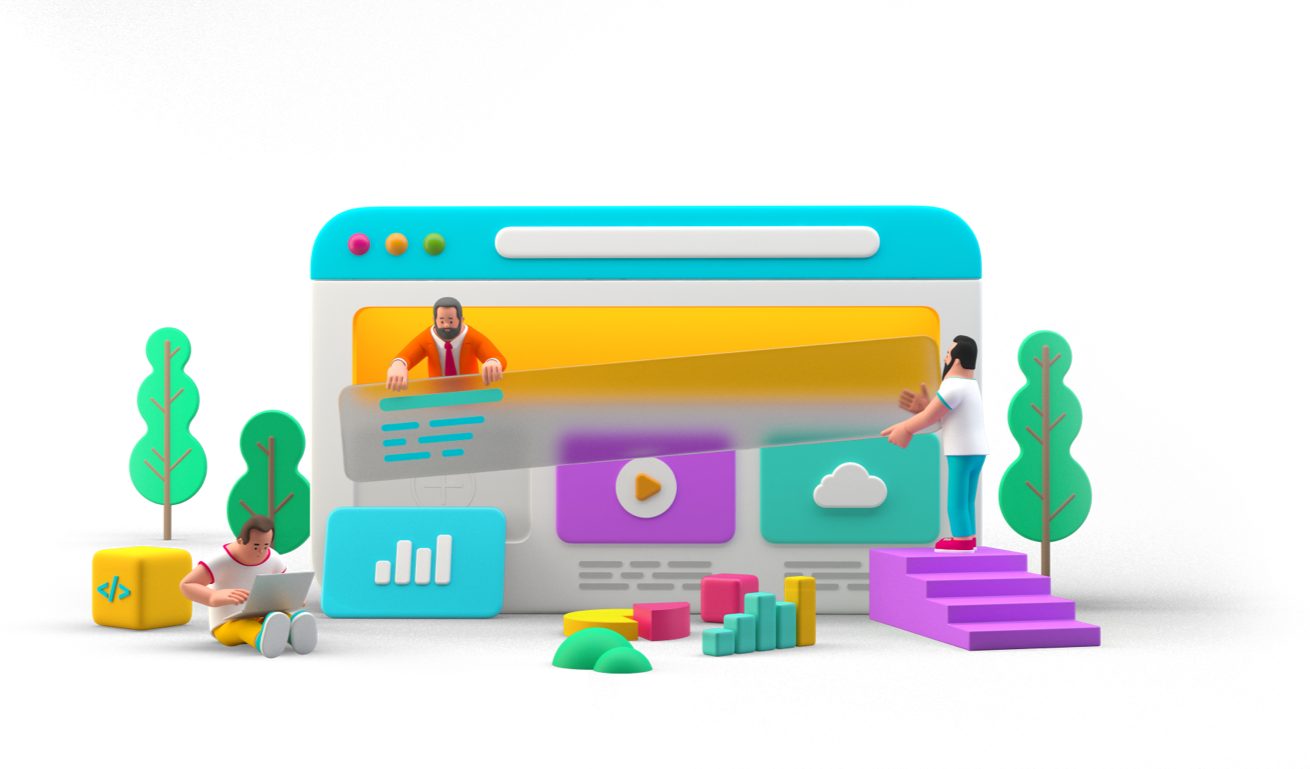
Thinking
Design Challenges
Product design challenges come in all shapes and sizes. Design thinking allows us to take a human-centric approach to solve these challenges both internally and outwardly.
As a product design leader, it isn’t about moving pixels here and there to create the simplest interaction, it’s about bringing diverse teams together to move an idea forward. Now more than ever we have an obligation to bring our best selves and create inclusive products that can truly make the world a better place.
Below are examples of how I utilize design thinking to lead teams in solving these challenges.
Alignment
Alignment is one of the most critical things in determining whether a project succeeds or fails. Company silos and corporate priorities can all factor into influencing a project one way or the other. Bringing the right stakeholders together and having them participate in sharing their problem space understanding, internal perspectives and organizational viewpoints ensure the project takes into account those driving factors needed to reach success.
Having the right sponsorship and folks participating throughout helps to build consensus and establishes a shared understanding. I keep my teams aligned by using a combination of stakeholder mapping, stakeholder interviewing, and assumption mapping exercises.
Stakeholder Mapping - using relative influence and interest levels to identify the right stakeholders, whether they are from sales, marketing, product management, customer care, or external partners.
Stakeholder Interviews - understanding the unique perspectives your stakeholders have regarding the problem space.
Consensus Building - using assumption mapping to ensure teams are aligned on the right problems.
Problem Framing
Teams are now spread out more than ever and it can be difficult to ensure everyone on the team understands the intricacies surrounding the problems and challenges you are working to solve.
Team member’s understanding of a problem tends to boil down to how well it’s articulated. Understanding the context in which the problem exists is crucial in helping to frame it. Whether the context is from your customer’s perspective; are their individual needs and/or desired outcomes being met? Or is the context internally to your business; is there a business process that needs to be introduced or improved, or is there a need to establish an entirely new revenue stream? This context is the key ingredient.
Using a variety of methods I plan and design workshops that bring teams together to establish a shared understanding around the riskiest problems and biggest opportunities.
Playbook Workshops - using remote workshop facilitation to lead team members in a shared understanding.
Remote Design Sprints - using design sprints to move ideas quickly through ideation into concept validation.
Hypotheses Creation - leading team members in articulating problems with the right context and measurement criteria.
Applying Research
Applying user research gives you an opportunity to identify your customer’s needs, and understand the circumstances, influences, and expectations centered around the outcomes they’re trying to achieve. Whether it’s validating new ideas or evaluating customer behaviors, research becomes an integral component in helping the team make better decisions based on evidence and not opinions.
Often teams aren’t sure where to start and what methods to use. For the research to resonate well across all team members, it’s important to be inclusive in your planning, recruiting efforts, collecting, and ultimately synthesis. Having team members and stakeholders involved in research efforts gives everyone a much broader understanding and empathy for the customer and therefore should translate into better solution outcomes.
I lead teams in defining hypotheses to drive research scope, testing and experimentation planning to identify appropriate tactics, and finally execution to ensure we capture the most valuable insights.
Identifying Your Measurement Criteria - using repeatable testing frameworks to ensure you are measuring the right things.
Concept Testing - mapping qualitative interview insight against the concept to communicate potential pitfalls and areas of opportunity.
Capturing Insight - team visualization synthesis used to capture insight and identify key patterns for all team members to understand.
Mapping the Output
There are many ways in which you can visualize insight and design decisions. The key is to identify artifacts that give stakeholders and team members a holistic view and increased awareness across a variety of touchpoints.
Communicating customer empathy through your experience touchpoints is crucial in helping teams understand the critical areas that may cause friction and potentially damaging your brand’s reputation. Whether it’s an empathy map, value proposition map, customer journey map, experience screen-state map, all the way to a pitch presentation, the tool isn’t valuable if others can’t understand it.
It is also important in keeping artifacts updated throughout a project and needs to be considered when defining the appropriate communication piece. The more you can leverage the material and continue to demonstrate value against it, the better the tool becomes at keeping team members and stakeholders abreast of the strategy and progress.
I lead teams in identifying, defining, and executing the communication artifacts that provide the biggest value given the context and project’s overarching strategy.
Identifying Critical User Flows - mapping out the key conversion flows to allow the team to understand key interaction points.
Identifying Communication Strategies - mapping out a cohesive understanding of the experiences communication output across key stages of use to identify consistency and gaps.
Identifying Experience States - giving internal production and dev teams a clear understanding of the unique product screen-states throughout the customer journey.
Journey Gap Analysis - identifying where a digital experience doesn’t match up to real-world experiences and how it can potentially impact the overarching strategy.
Customer Profile - going beyond the traditional persona to understand customer jobs and their associated pain points in order to map the value of the solution.
Journey Maps - mapping out all of the key stages of the experience to provide a holistic view into all of the touchpoints and their potential impacts on customer behaviors.









